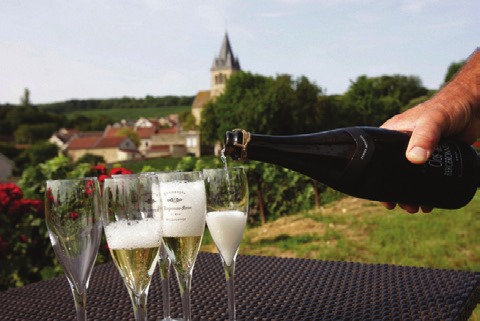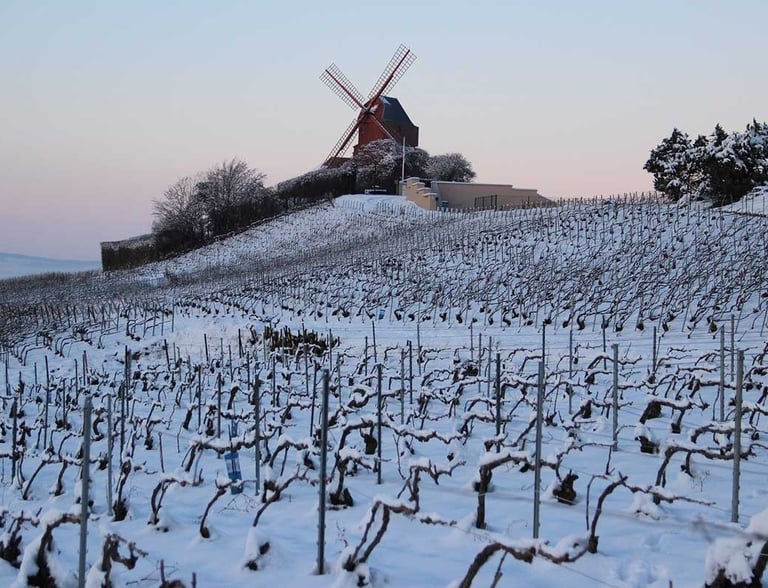
Subscribe to our newsletter
Diving Deeper
The Quintessence of Champagne's Terroir
3/21/2024
As we toast to the future of Champagne investment and savour the rich narrative woven by its prestigious brands, limited editions, and the confluence of luxury and profitability, let us delve deeper into an element that truly sets Champagne apart: its terroir. This final section, "Diving Deeper: The Quintessence of Champagne's Terroir," offers a profound exploration of the symbiotic relationship between the land and the vine, the heartbeat of Champagne's luxurious bubbles.
Terroir: The Heartbeat of Champagne's Luxurious Bubbles
At the core of Champagne's allure, beyond the effervescence and prestige, lies its terroir – a term that encapsulates the symbiosis between geography, geology, climate, and viticulture. This unique interaction, a hallmark of the region, bestows upon Champagne its inimitable character and positions it as a beacon of luxury in the wine investment world.
The Geographical Canvas
Champagne, nestled in the northeastern part of France, benefits from a geographical tapestry that is as complex as it is conducive to producing the world’s most celebrated sparkling wines. The region's latitude and continental climate contribute to the necessary acidity in grapes, a crucial component for sparkling wine production, while the varying topography offers a multitude of microclimates, each imparting distinct qualities to the vines.
Geological Mosaic
Beneath the vines lies a geological mosaic, centuries in the making. The bedrock of chalk, limestone, and marl provides excellent drainage, a key factor in the quality of Champagne grapes. This calcareous subsoil not only regulates water supply to the vines but also reflects sunlight and stores heat, moderating the cool temperatures characteristic of the region. The presence of belemnite and micraster chalks, in particular, is associated with a mineral complexity in the wine, lending it a signature finesse and depth.




Climatic Intricacies
Champagne’s climate oscillates between extremes, with cold winters, unpredictable springs, and generally cool summers. This climatic edge, teetering on the brink of viticultural viability, stresses the vines in a manner that benefits the concentration and expression of aroma and flavour in the grapes. The challenge of such a climate also necessitates meticulous vineyard management and selective harvesting, ensuring that only grapes of the highest quality are chosen for production.
Viticultural Mastery
The terroir of Champagne is not simply a product of its natural environment but is also shaped by the hands that tend it. Centuries of viticultural practice have honed techniques that work in harmony with the land. The choice of grape varieties – predominantly Pinot Noir, Chardonnay, and Pinot Meunier – is a testament to the region’s ability to produce grapes that not only survive but thrive under its conditions. The practices of blending across varieties, vintages, and vineyard parcels are a nod to the human element in terroir, a tradition that elevates the region’s output to an art form.
The Essence of Terroir in the Glass
The terroir of Champagne does more than influence the growth of the vine; it whispers through each bubble in the glass, telling a story of place, time, and tradition. This is why certain parcels of land, or 'lieux-dits,' are highly prized for their unique expression of terroir. The Grand Cru and Premier Cru vineyards, recognized for their superior terroir, produce wines of unmatched complexity and ageing potential, highly sought after by collectors and investors.
Conclusion: Investing in Terroir
Understanding the terroir of Champagne is essential for any serious investor in the wine market. It is the terroir that underpins the luxury and desirability of Champagne, driving demand for limited editions and vintages from prestigious houses. In a bottle of Champagne, one does not simply taste the refined effervescence of a storied wine but sips on the concentrated essence of a unique and invaluable terroir.


